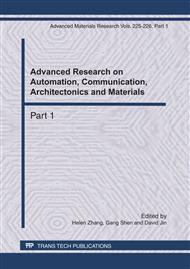p.831
p.835
p.839
p.843
p.848
p.852
p.857
p.862
p.866
XACML-Based Fine-Grained Security Policy for Distributed System
Abstract:
Distributed applications often require integrating security policies of collaborating parties. The integration must be able to support complex authorization specifications and the fine-grained resources access requirements that the various parties may have. But now security modeling is not considered as a vital part in software development. In this paper, it is proposed to integrate the design of access control policy into software development. In this paper, UML is used to model access control policy, and then a framework is designed to generate the security model result expressed in XACML and to verify the policy correct and complete.
Info:
Periodical:
Pages:
848-851
Citation:
Online since:
April 2011
Authors:
Keywords:
Price:
Сopyright:
© 2011 Trans Tech Publications Ltd. All Rights Reserved
Share:
Citation:


